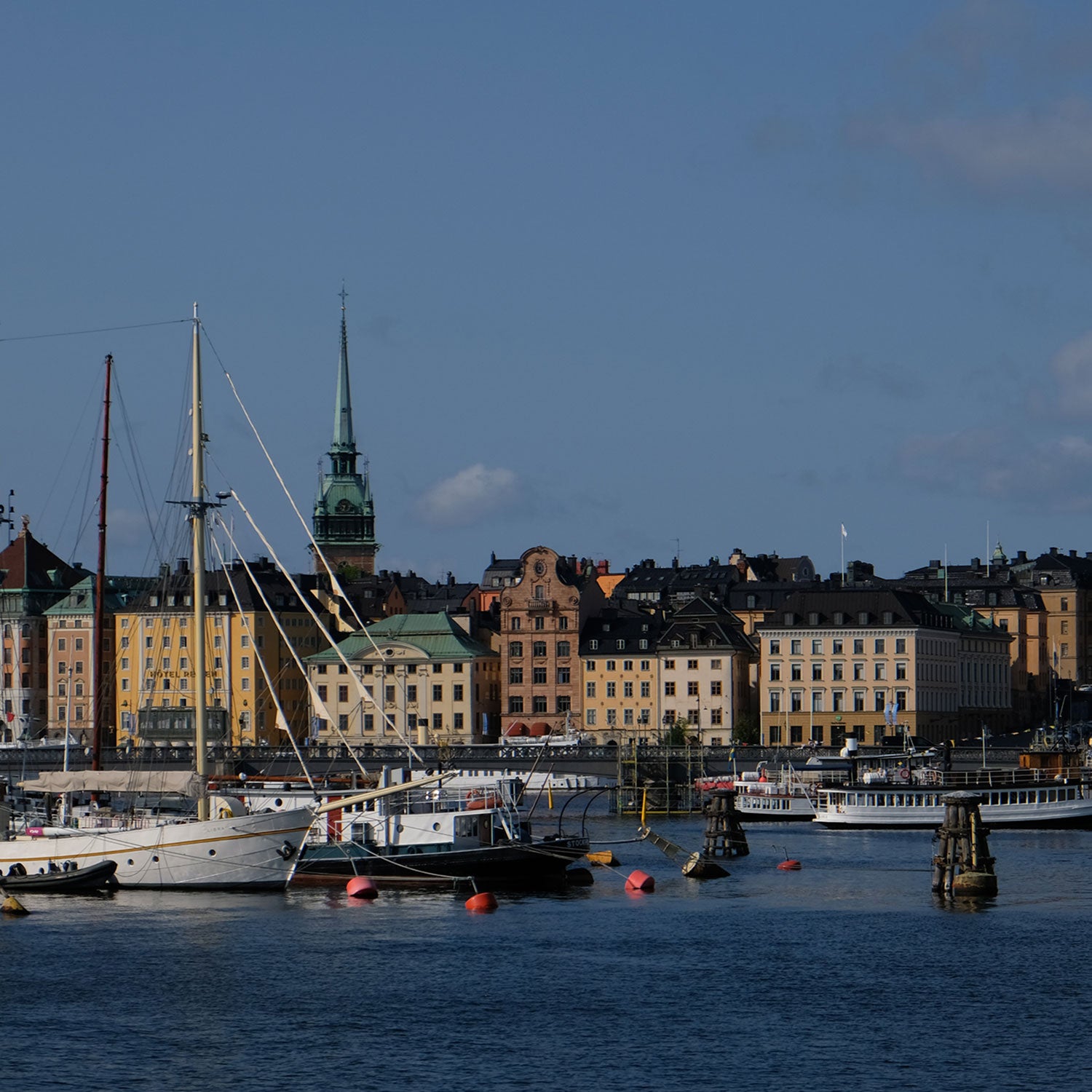With all the greenwashing that goes into destination marketing, it can be easy to lose sight of the true meaning of “sustainability.” It’s simple: “Sustainable” travel is travel we can keep doing. And a huge part of that equation is going to places that have are committed to climate neutrality, where you can trust that your behavior upon arrival is sustainable by default.
These destinations have put serious thought and resources into creating sustainable experiences for travelers who want to do better and feel better about how they use their precious vacation days. More than most other places on Earth, there has been significant governmental investment in public transportation, tourist education strategies, environmental rehabilitation, and waste management. They’ve weighed all that behind-the-scenes stuff that you don’t have a lot of control over on a short trip—the environmental overhead, if you will.
To make this list, we looked for cities, countries, and regions that are internationally recognized for environmental innovation. We considered places with��impressive public transportation networks, where you can easily get deep into the backcountry without renting a car. We also looked at rankings of per-capita carbon footprints, which correlates to how sustainable daily life is for the average resident. These destinations stood out for being easy to get around (without cars or commercial airlines), protective of cultural traditions, and sustainable overall by design.
1. Sweden
With one of the lowest per-capita carbon footprints in all of the developed world, it’s no surprise this Scandinavian nation offers perhaps the most guilt-free traveler experience you can find—whether you’re going for urban sightseeing or outdoor adventure. For starters, the country has an incredible waste management system. Earlier this year, Sweden enacted a law that requires everyone—individuals and businesses alike—to separate food waste from regular trash, which is then converted into biofuel. The country also recycles 35 percent of all plastic waste, and 82 percent of aluminum.
About 60 percent of Sweden’s electricity comes from renewable sources, and the country intends to achieve net-zero emissions by 2045. (In comparison, the United States gets only 20 percent of its electricity from renewable sources, according to the Department of Energy.)
More significant commitments to green energy abound in various Swedish cities. The port city of Gothenburg has been ranked the world’s most sustainable city on the Global Sustainable Destination Index for seven years running. Nearly its entire public transit system runs on renewable energy, and over 90 percent of its hotels have been environmentally certified. Stockholm’s whole land-based public transit system also runs on green energy, and the Swedish capital aims to make all of its ferries carbon-neutral by 2030. In the far north, the city of Skellefteå is currently working on electric snowmobiles to offer visitors a quieter way to spot wildlife in the winter.
Access to nature is ingrained in the country’s ethos, which means there’s a broad “right to roam” for hiking and camping pretty much everywhere. Even still, the government has recently started investing more heavily into building waymarked trails in lowland regions. To that end, Sweden has spent about $600,000 on the brand-new , which connects roughly 170 miles of new and existing trails across 22 islands using a series of ferries. As of October 2024, you’ll be able to thru-hike the Archipelago from north to south (or vice versa), starting with a ferry ride from Stockholm itself.
I recently got a sneak peek of the trail on a visit out to the islands of Utö, Nåttarö, Sandhamn, and Ålö, and was stunned by how pristine, quiet, and diverse the land was. Some sections traverse soft, sandy beaches where you can swim in solitude even in mid-August. Others wind through evergreen forests dripping with so much moss and lichen that they seem enchanted. You can backpack the entire trail, camping for free on beaches and in forests, or you can stay in well-equipped inns, B&Bs, and guesthouses on every island.
Flight-free travel is easy across the country. Sleeper trains and overnight ferry services connect the major urban centers in the south to other mainland European cities, and the whole country is well-connected by train. From Stockholm, long-distance trains will take you directly into the Arctic.
Beyond all this, Sweden is helping other countries lower their environmental footprints, too. Swedish companies including Northvolt are . Spending your tourism dollars in Sweden contributes to this green economy.
2. Switzerland
Don’t even think about driving a car in Switzerland. There’s just no need—as soon as you arrive, you can take trains, buses, and trams right into the mountains. And if that’s not enough, gondolas, chairlifts, cable cars, and funiculars can dump you right out onto the trails. The entire nation’s public transportation network is at your disposal with a , which grants you license to hop on and hop off as you please.
Behind the scenes, about 75 percent of Swiss energy comes from renewable sources, and the country has a serious commitment to recycling. 82 percent of PET bottles actually get recycled in Switzerland, compared to about 30 percent in the U.S.
Switzerland is a vocal champion of international climate issues while also putting policies into practice at home. The nation’s tourism board has attempted to make the country synonymous with sustainable travel through its long-running “Swisstainable” campaign, which promotes environmentally-friendly businesses throughout the tourism sector. In order to work with the campaign, partners have to undergo a grading process to prove they meet minimum criteria for sustainable practices.
The national tourism board is also addressing overtourism by touting lesser-known regions eager to welcome visitors. Val Poschiavo, for example, is one of many gateway towns to the , an ancient trade route-turned-hiking-trail. The region has excellent infrastructure but relatively few international visitors, which is an extra bonus for you if you’re looking for a destination where travel feels—and is—easy while also seeming completely different from your everyday life.
3. Costa Rica
Costa Rica has long been synonymous with eco-tourism for the abundance and diversity of wild experiences within its borders. More than a quarter of the country’s land is formally protected, and according to the Global Alliance of National Parks, that makes it the world leader in percentage of land protected.
Over the last few decades, Costa Rica has worked hard to repair the damage of previous deforestation. In 2019, it received a Champions of the Earth award from the United Nations for those efforts—the highest environmental honor the UN awards. In 1987, the nation was only about 40 percent forested, and today that’s increased to over half. But the nation has no plans to stop there. Currently, the country generates about 98 percent of its energy from renewable sources. By 2050, the country hopes to be entirely carbon neutral.
Costa Rica does have some work to do with regard to recycling and waste management. In 2018, it was found that only nine��percent of renewable waste was recycled, though the country is now taking measures to address this. Earlier this year, Costa Rica passed laws banning the free distribution of single-use plastic straws and bags at the point of sale. Companies selling single-use bottles also have to agree to at least one of several measures to increase their use of recycled plastic, contribute to waste-management programs, or reduce their use of plastic packaging.�� ����
4. The Highlands, Scotland
Unlike the rest of the United Kingdom, Scotland has a broad “right to roam” that mimics that of Scandinavian countries. Even on private land, you’re allowed to camp, hike, and paddle pretty much anywhere you like as long as you’re respectful of people’s homes and personal space. Protecting the land is an important aspect of Scottish culture, so you’ll also find a strong bent toward��sustainability here. The government has committed to reaching net-zero emissions by 2045.
If you want to take a guided adventure, go with Wilderness Scotland, an outfitter based in Aviemore. They’ve long been a leader in the tourism industry when it comes to building and operating sustainable trips, and I’ve seen first-hand how the company uses sustainable, locally-owned partners to elevate their small group adventures (starting at $1,825 per person). On one trip to Cairngorms National Park, we e-biked through the mountains to the off-grid Loch Ossian Youth Hostel, which can only be reached by foot or bike. The company uses trains where possible and has a fleet of electric vehicles to cart travelers when private wheels are necessary. They’ve also scored every single one of their offerings so you can see how your carbon footprint on, say, an overnight, island-to-island kayaking and camping trip around the Hebrides compares to a trip where you’d stay in local inns and hotels.
Best of all, you can take the swanky Caledonian Sleeper Train straight from London to trail towns like Fort William, a terminus of the West Highland Way, and Inverness, where you can walk to put-ins for the .
5. Kyoto, Japan
Japan is a world leader in public transportation and plastic recycling. But the city of Kyoto wins for more than just environmental sustainability. The city has done an impeccable job of preserving its history and cultural heritage, too. It , like woven and dyed textiles, woodcrafts, and handmade washi paper, to keep them alive. There are also , which have been lauded for their dedication to maintaining their original form even as they age and restoration becomes inevitable.
Kyoto offers a fascinating balance of the new, the old, and the natural, all of which are connected by near-perfect public transportation. Within the city limits but worlds away from its busyness, you’ll find the rural town of Ohara hiding among the foothills. Here, the natural environment blends seamlessly with urban comforts. Enjoy a stay in a ryokan to get a sense for traditional Japanese hospitality. Bathing rituals at onsen, or spring-fed baths, offer a glimpse at traditions that have evolved over more than a thousand years. Several temples in the area provide a quiet place for reflection among well-manicured grounds.
The city is also a leader in sustainable tourism among other peer cities in Asia. In 2019, it was the first Asian city to join the , which measures cities’ progress on various sustainability measures and creates benchmarks for improvement. Of course, there’s also ubiquitous public transportation connecting Kyoto to the rest of Japan, offering guilt-free access to adventure and culture well beyond the city limits.


